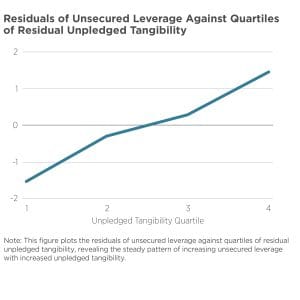A traditional way to increase demand for a product is to make it more useful. But what about making the competition less useful? Take smartphones, for example. In addition to adding features that boost the iPhone’s utility, Apple has been accused of increasing the disutility of not owning an iPhone. Specifically, messages exchanged between iPhones and Android devices appear as green bubbles, in contrast to the blue bubbles used for iPhone-to-iPhone communication, prominently distinguishing iPhone users from non-users. Do these tactics harm consumers?

In this paper, the authors examine this question using the smartphone market as a case study. They begin by surveying college students about green bubble stigma and find the following:
- Over 90% of respondents believe green bubbles stigmatize Android users, often associating them with lower social status and attractiveness.
- A large majority of Android users (79%) said they would want a hypothetical software change that removes the green bubble distinction, making all messages appear as blue bubbles on iPhones.
- Strikingly, most iPhone users (66%) also favor such a change.
- Most respondents believe removing green bubbles would improve the perceived quality of Androids while leaving perceptions of iPhones largely unchanged.
Building on these results, the authors set out to quantify the welfare effects of the green bubble feature through an incentivized deactivation experiment designed to isolate demand for this specific product attribute. The experiment reveals the following:
- US college iPhone users, on average, require a payment of $49 to have their messages appear as green instead of blue bubbles on other iPhones for four weeks.
- The authors benchmark the effect size against other iPhone features and find that the median valuation of blue bubbles corresponds to 50% and 26% of the median valuation of iMessage and the phone camera, respectively. These estimates show that respondents place a high value on avoiding green bubbles, highlighting the economic significance of the welfare cost.

Next, the authors assess how green bubbles influence the relative demand for iPhones versus Androids through an additional incentivized experiment. Respondents are asked to choose between iPhones and Androids in two contingent scenarios: one where green bubbles are banned, and one where they remain. The experiment reveals the following:
- Respondents are 7.3 percentage points more likely to choose the Android option when green bubbles are expected to be removed. This is a sizable effect, representing a 46% increase in the share of respondents choosing Android from a baseline of 15.8% when green bubbles remain.
Finally, the authors present a series of case studies on product features that diminish non-user utility. They show that this phenomenon is widespread across industries and illustrate how companies can strategically strengthen their market power:
- Dating apps employ features such as notifications about missed connections, nudging users to stay active to avoid losing potential matches.
- Social media platforms like Instagram foster a fear of missing out (FOMO) through features like ephemeral content (e.g., stories that disappear after 24 hours) and push notifications (e.g., “Your friend just posted for the first time in a while”).
These findings reveal that firms can shape consumer demand not only by enhancing user utility but also by diminishing non-user utility. This practice raises critical competition policy concerns, as it suggests that firms may deliberately erode non-user utility to strengthen their dominance, harming both consumers and non-consumers. Crucially, when there is no outside option without the product, it is not possible to distinguish—based on choice and price data alone—cases where user utility increases from cases where non-user utility falls. In light of the growing importance of digital products, developing antitrust measures against the strategic erosion of non-user utility will become an increasingly important task for regulators.












